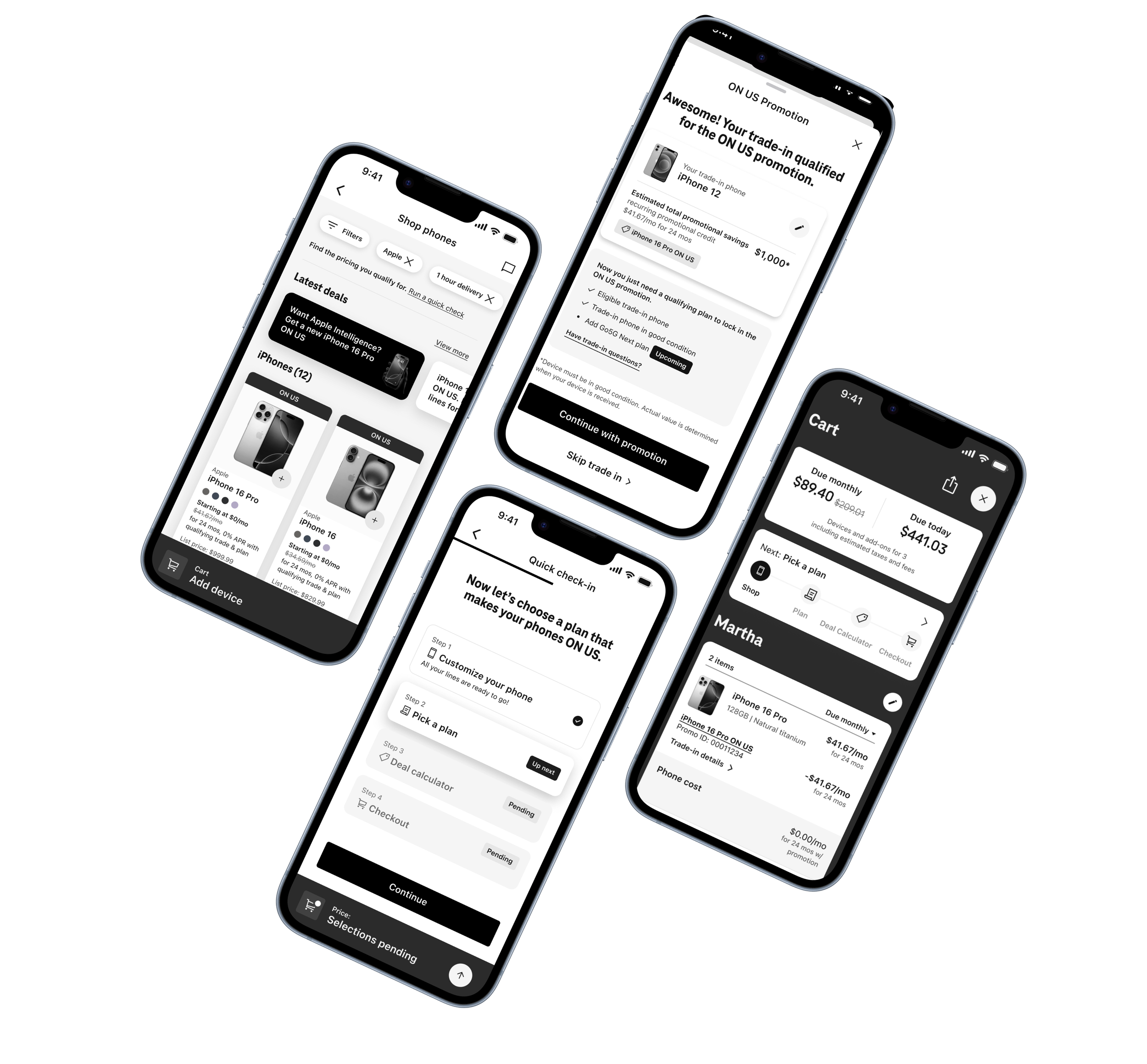Reducing cognitive overload in a digital purchase journey
Overview
T-Mobile recognized a challenge in the digital purchase journey: potential customers were overwhelmed by the numerous device deal options, leading to confusion and high cart abandonment rates. To address this, a group of business strategy leaders collaborated with a small design team to develop a new approach. The goal was to create compelling visuals that would clearly communicate the value of the new concept and highlighting how it would simplify the decision-making process for customers.
My responsibilities
Journey mapping
Visual and interaction design
Rapid prototyping

Opportunity
A tight timeline was set from the start, so the need was to quickly bring everyone together to understand the problem. The goal was to create a compelling end-to-end shopping scenario that articulates the customer perspective and provides the why behind the recommendations.
Action
Through daily collaboration with the business team, we were able to rapidly pinpoint, strategically prioritize, and focus development on areas for significant UX improvement.
CUSTOMER SWITCHING JOURNEY INSIGHTS
Recognizing the need to balance the business strategy team’s strong emphasis on quantitative data, I proactively created a comprehensive sentiment snapshot that effectively captured the emotional and qualitative aspects of the customer switching journey.
END-TO-END USERFLOW
Before concepts started to be brought into visuals, I pulled together all the customer data, research, and pain points we had and turned it into a modular, end-to-end journey story. This gave us a single, reliable source of truth so that scope and expectations would stay aligned.
AREAS OF FOCUS
Rate plan comprehension
Retail feedback suggests that device savings is a main driver for customers and is utilized heavily in the in-store sales motion..
Hesitancy to purchase
31% of customers says they don’t want to make mistakes that would be costly so they end up going to the store for guidance. Providing a deals calculator is crucial to capture an incremental 13% of shoppers.
Real-time pricing
Providing a detailed and interactive display of costs in the shopping cart can empower customers to make informed decisions during the entire purchase flow.
Opportunity
As soon as the full purchase flow concept was approved, the design team got to work on a high-fidelity prototype. We aimed to create a visual representation that would give the executive leadership a clear understanding of the proposed new experience, making it easier for them to understand the impact.
SHOP LANDING
Hub and spoke layout
Surfaces categories based on top customer preferences, including brands and device specs.
GUIDED STEPS AND CHECK-IN
Check-in moments
Implemented at key points of friction to orient customers, clarify their progress, and set expectations throughout the purchase process.
PLAN DETAILS AND COMPARISON
Rate plan transparency
The modular design, clear visuals, and simplified language make the plan benefits easy to understand and follow.
Opportunity
Customers struggled to understand the complex pricing breakdowns at checkout, leading to confusion and sticker shock.
Action
To ensure customers have access to real-time pricing information, I designed a shopping feature that delivers a personalized, always-accessible cart status with clear, easy-to-understand details.
LIVE EXAMPLE OF REVIEW CART
RE-DESIGNED ACTIVE CART
Progress indicator
Customers always know where they are in the process and what to expect next.
Real-time pricing
With an always accessible cart, customers need real-time feedback of pricing changes.
Scalable ordering
Multi-person purchasing made easier to understand by managing selections with personalized tools, including the ability to assign names to each line.
Outcomes & impact
This project demonstrated how effective and powerful it was when design and business worked together from the start. We quickly aligned on strategy and got leadership excited with our visual designs, proving design’s value in moving the concept forward.
This achievement underscored the effort design took to dedicate to agile problem-solving and effective communication under high-pressure conditions. As a result of this approach, it drove the project forward, setting a new standard for delivering quality results in time-sensitive initiatives.
